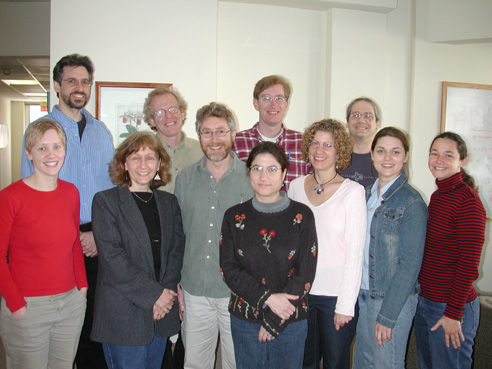NCEAS Working Groups
Beyond hand-pollinations: Linking pollen limitation to plant population biology
Project Description
Pollen sufficiency is an important determinant of plant reproductive success, and thus a major driver in plant ecology and evolution. Despite hundreds of empirical studies addressing the causes and consequences of pollen limitation, we lack a quantitative synthesis. Our working group will bring together evolutionary biologists, pollination ecologists, plant demographers, and theoreticians to produce new insight into the ecological and evolutionary significance of pollen limitation. We will 1) use contemporary theory as a framework for synthesis (via meta-analysis) of published and unpublished empirical data to determine the ecological attributes that are generally associated with pollen limitation, and 2) develop new theory that integrates pollen limitation with plant modularity, resource allocation and perenniality, as well as with plant demography, population growth rates and time to extinction.

Pollen Limitation Survey Form (Word Document)
Principal Investigator(s)
Tia-Lynn Ashman, Tiffany M. Knight, Susan J. Mazer, Martin Morgan
Project Dates
Start: January 1, 2003
End: February 28, 2004
completed
Participants
- Priyanga Amarasekare
- University of Chicago
- Tia-Lynn Ashman
- University of Pittsburgh
- Martin Burd
- Monash University
- Diane Campbell
- University of California, Irvine
- Michele R. Dudash
- University of Maryland
- Mark O. Johnston
- Dalhousie University
- Tiffany M. Knight
- University of Florida
- Susan J. Mazer
- University of California, Santa Barbara
- Randall Mitchell
- University of Akron
- Martin Morgan
- Washington State University
- Ingrid M. Parker
- University of California, Santa Cruz
- Janette A. Steets
- University of Pittsburgh
- Jana C. Vamosi
- University of Calgary
- Will G. Wilson
- Duke University
Products
-
Journal Article / 2010
Is reproduction of endemic plant species particularly pollen limited in biodiversity hotspots?
-
Journal Article / 2004
Explaining phenotypic selection on plant attractive characters: Male function, gender balance or ecological context?
-
Journal Article / 2004
Pollen limitation of plant reproduction: Ecological and evolutionary causes and consequences
-
Journal Article / 2009
Ovule number per flower in a world of unpredictable pollination
-
Journal Article / 2019
Plant traits moderate pollen limitation of introduced and native plants: a phylogenetic meta-analysis of global scale
-
Journal Article / 2005
Pollen limitation of plant reproduction: Pattern and process
-
Journal Article / 2005
Trophic cascades across ecosystems
-
Journal Article / 2006
A quantitative synthesis of pollen supplementation experiments highlights the contribution of resource reallocation to estimates of pollen limitation
-
Data Set / 2006
Pollen supplementation meta-analysis
-
Journal Article / 2006
Predation on mutualists can reduce the strength of trophic cascades
-
Journal Article / 2005
Plant population dynamics, pollinator foraging, and the selection of self-fertilization
-
Journal Article / 2005
Self-fertilization and the escape from pollen limitation in variable pollination environments
-
Presentations / 2005
The function and evolution of floral design and display
-
Presentations / 2005
Variable pollination environments and the selection of self-fertilization
-
Journal Article / 2006
Pollination decays in biodiversity hotspots
